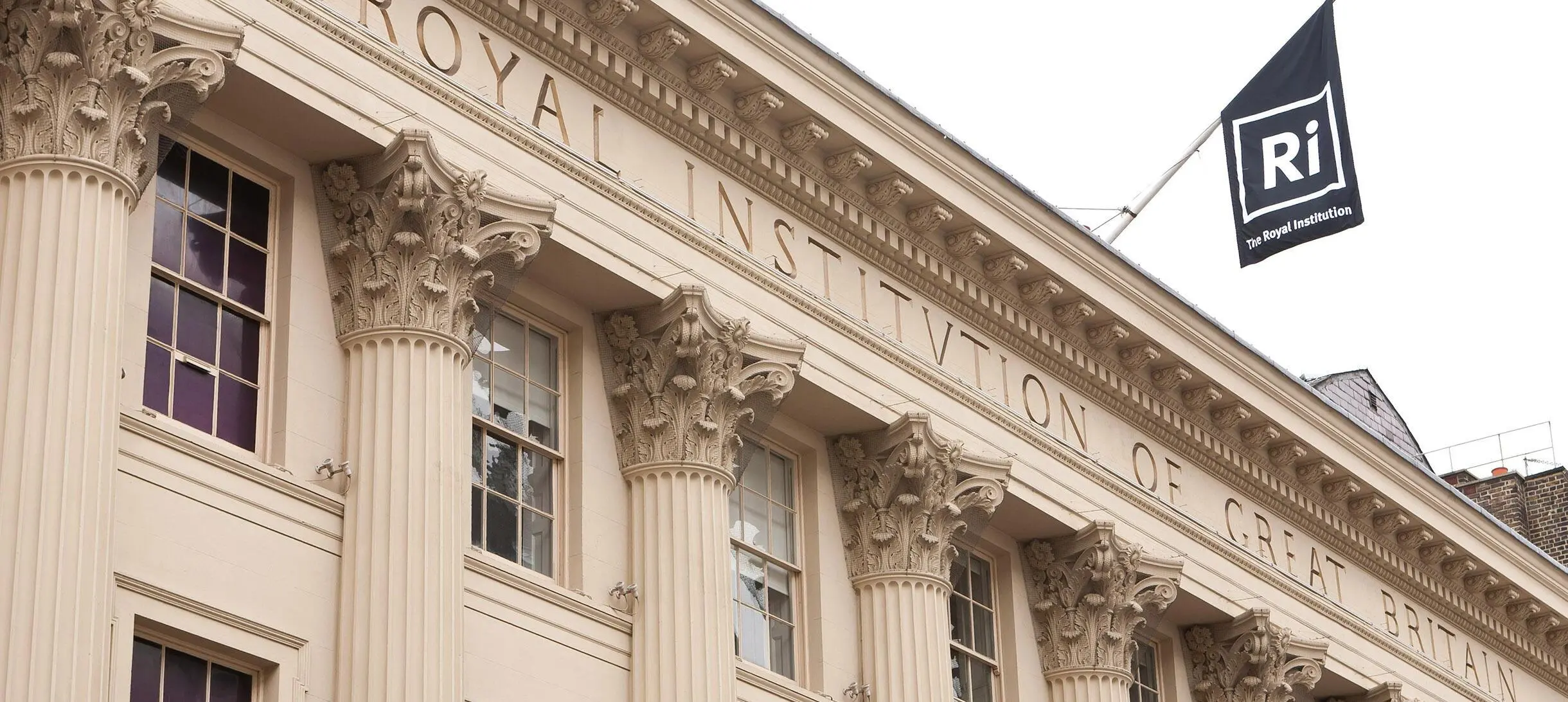Climate change is the defining challenge of our era, demanding action from all sectors of society. The Ri, like many of London’s older listed buildings, faces the significant challenge of improving its poor energy efficiency. As a Grade I listed building with parts dating from 1705, the Ri’s historic home in Albemarle Street faces a complex challenge to reduce its environmental impact through modernisation and retrofit.
We have ambition and responsibility to be environmentally fit for purpose and an opportunity to inspire the custodians of other historic buildings to undertake similar works. We are also committed to sharing our public platform of science engagement with the trailblazers and Undaunted innovators who are creating the positive and world-changing solutions to tackle climate change impact.
Albemarle Street has been the Ri’s home for more than 200 years, a steadfast landmark and symbol of British scientific innovation as well as a museum for our internationally significant collection. This historic street - London’s first one-way thoroughfare by design to cope with the weight of carriage traffic flocking to take in the Friday night discourses of the 19th century – now stands at the intersection of preservation and sustainability.
The Ri is undertaking an ambitious building sustainability project which aims to reduce its carbon footprint by 35%. This initiative has been enabled to date through a grant from the Greater London Authority (GLA) which identified our home as a potential exemplar of what can be achieved with older building stock and stands to characterise how London and other cities can achieve emission targets. The funding has been awarded under the Mayor of London’s commitment to achieve Net Zero Carbon status for London by 2030.
While preserving our iconic architecture, we’re implementing substantial improvements including plant upgrades and chilling/heating technology in the building, which are due to be completed by December 2025.
These enhancements form a blueprint for addressing the unique challenges faced by historic buildings, many of which lack good insulation, waste energy that is produced from climate-damaging fossil fuels and face engineering challenges due to the restrictions of Grade 1 listed status. These complex factors affect a good proportion of London’s historic building stock, which must be adapted if they are to meet modern standards.
We want to complete the work that we have started with the support of the GLA. Funding is essential to enable us to improve the carbon footprint of the building with changes to glazing and insulation, which will bring the Ri closer to achieving zero ready status. With your support, we can meet the £5,000,000 target for this phase of work and transform our historic home into a sustainable and exemplary site for the future.
